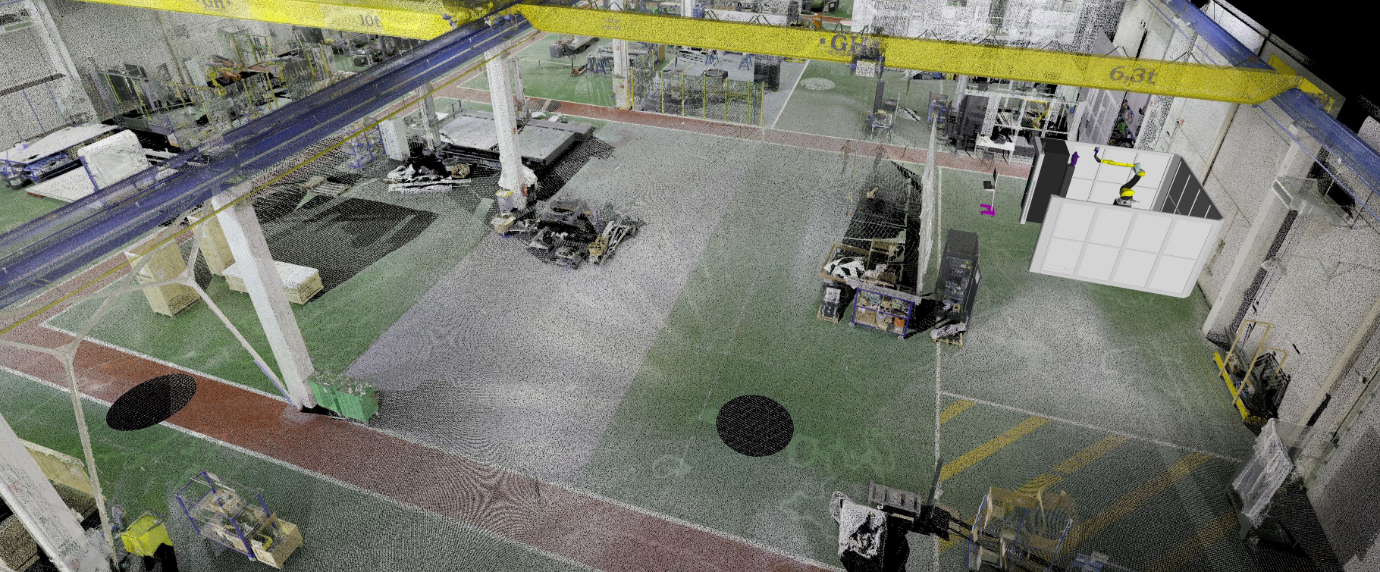Hexagon’s Manufacturing Intelligence division has launched its new digitalisation solution, Digital Factory, designed to help manufacturers build highly accurate digital replicas of their factories. It enables manufacturers to optimise their floor plans and quickly pivot production lines today, and operate smarter and more sustainable future factories with open interfaces that connect digital twins of shopfloor assets. Such solutions could save a global manufacturing company £35 million per year* by avoiding costly mistakes and offering a 50% reduction in the typical travel costs and the on-site training required.
Hexagon is uniquely positioned to address this issue through its expertise in delivering best-in-class accuracy reality capture and surveying equipment, software to visualise, explore and simulate scenarios in 3D, and high-productivity cloud-native collaboration workflows. Digitalisation technologies are a proven technology and have been used for over two decades in civil infrastructure, architecture and public safety, but their potential has yet to be fully realised in the manufacturing space where significant disruption now requires manufacturers – in particular brownfield site owners – to rethink their manufacturing equipment and use of space.
According to research conducted by Forrester and commissioned by Hexagon, 32% of manufacturers believe that outdated or ineffective manual processes and workflows are barriers to productivity and collaboration. Digital Factory is a future-ready alternative to traditional factory planning that enables manufacturers to not only ramp up productivity, but also increase efficiency in remodelling, preventing costly mistakes. It also empowers more efficient collaboration between manufacturing and operations teams from anywhere in the world. The core of this solution is improved access to up-to-date data in immersive virtual environments that reflect reality, addressing a major barrier that smart factory initiatives face today.

Digital Factory leverages a comprehensive portfolio of hardware and software solutions that includes Hexagon’s award-winning range of reality capture technology – such as the Leica BLK2GO handheld imaging laser scanner, the Leica BLK ARC autonomous scanning module for robotic and mobile carriers and terrestrial laser scanners like the Leica RTC360 – that allow manufacturers to capture and create dimensionally-accurate point clouds of the factory floor. Using the Leica Cyclone software portfolio and Hexagon’s Reality Cloud Studio, powered by the HxDR, manufacturers can easily collaborate and quickly process data from Hexagon or a customer’s preferred scanning hardware to recreate up-to-date 3D spaces with speed and flexibility.
Hexagon offers complete workflows to ensure manufacturers achieve the maximum value, from scanning the factory and processing the data into actionable 3D models for various applications, to managing the data in the cloud, making it easier for team members and external stakeholders to provide feedback and make informed decisions. By using Digital Factory, manufacturers will be able to:
- Conduct virtual tours for remote factory monitoring – Lead a digital tour of a factory with remote access, eliminating the need for managers and contractors to travel onsite.
- Remote team collaboration – Facilitate remote collaboration among key teams and stakeholders at any time, using cloud-based tools with analysis and modelling capabilities with on-demand data. Factory planners and production managers can make decisions remotely and provide feedback with confidence based on reliable and up-to-date data.
- Plan and remodel factory layouts with accuracy and detail – Capture precise measurements of a factory, creating an exact and reliable digital model that can be accessed anytime from anywhere. Factory owners can regularly monitor the progress of production lines under construction in meticulous detail, avoiding the costs associated with unexpected errors.
- Easily upgrade and install equipment – Introduce and upgrade machinery such as machining centres, 3D printers, robotics and metrology systems by evaluating their addition or replacement in a risk-free digital model. This helps prevent expensive mistakes such as ordering incorrect parts, not having sufficient footprint or access to install a machine.
- Create operational test-beds and innovate faster – By testing out new machines, factory floor layouts and workflows in the virtual 3D environment, companies can quickly identify feasibility and emissions considerations, enabling them to better understand the potential benefits of new technology and make future-ready smart factories a reality.













